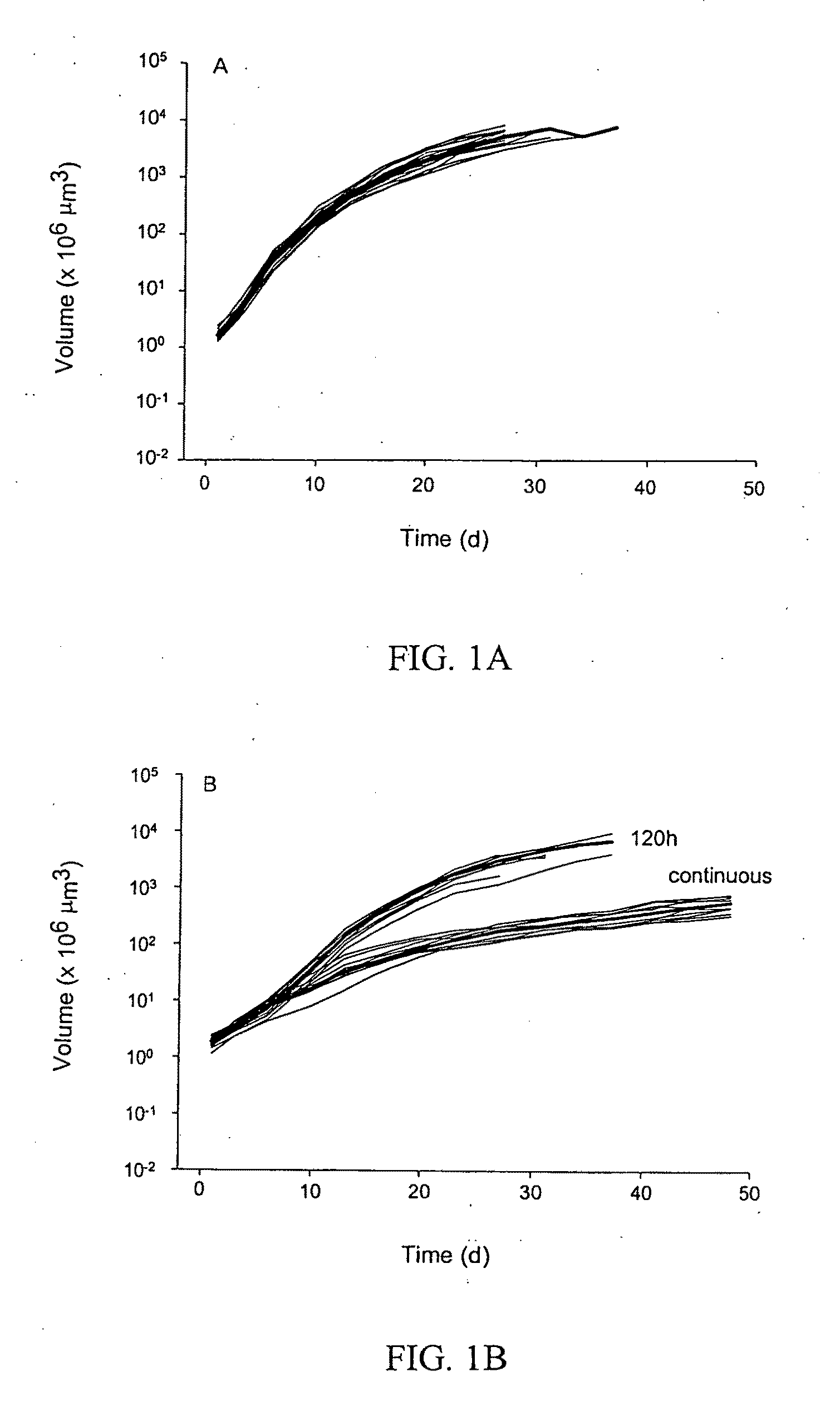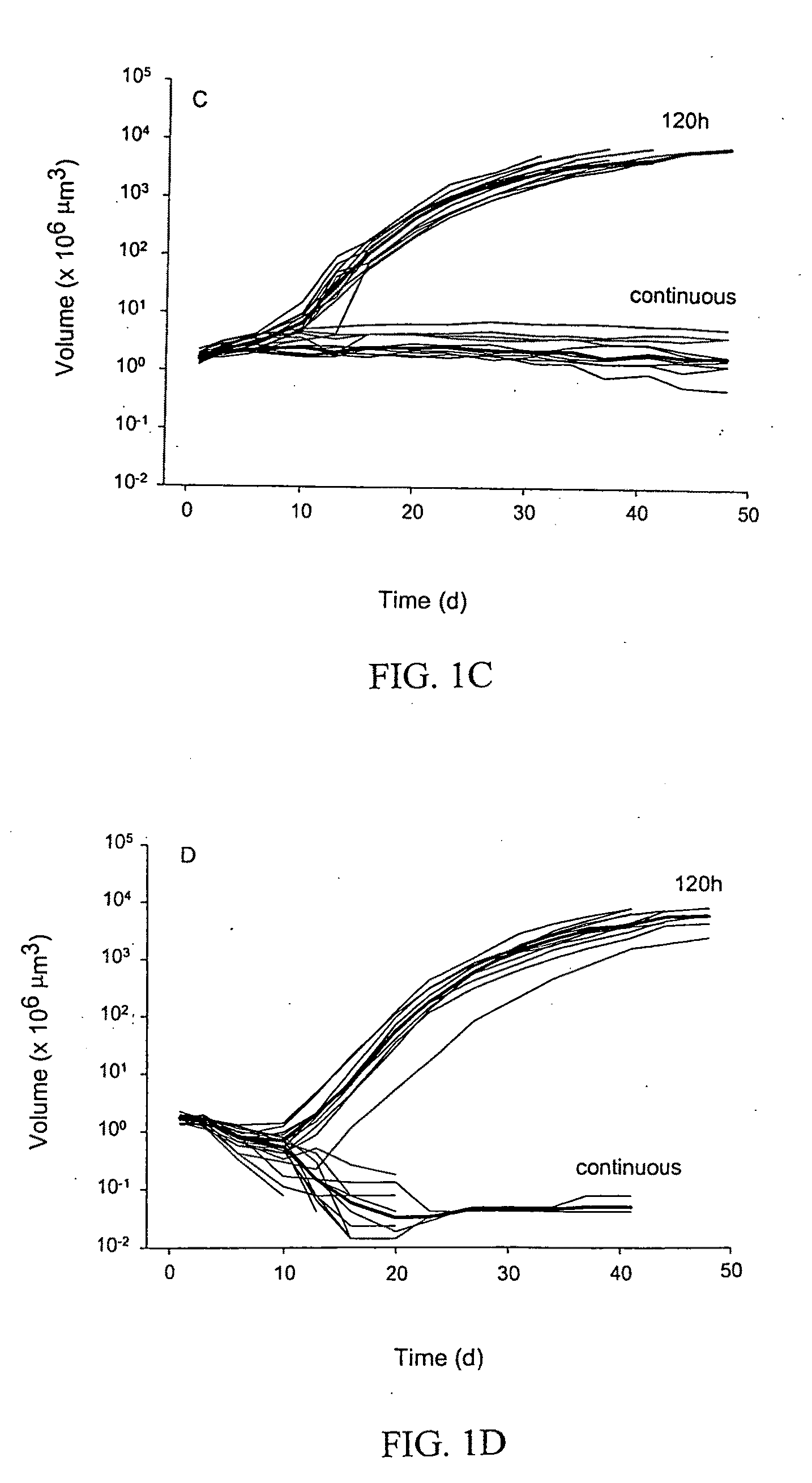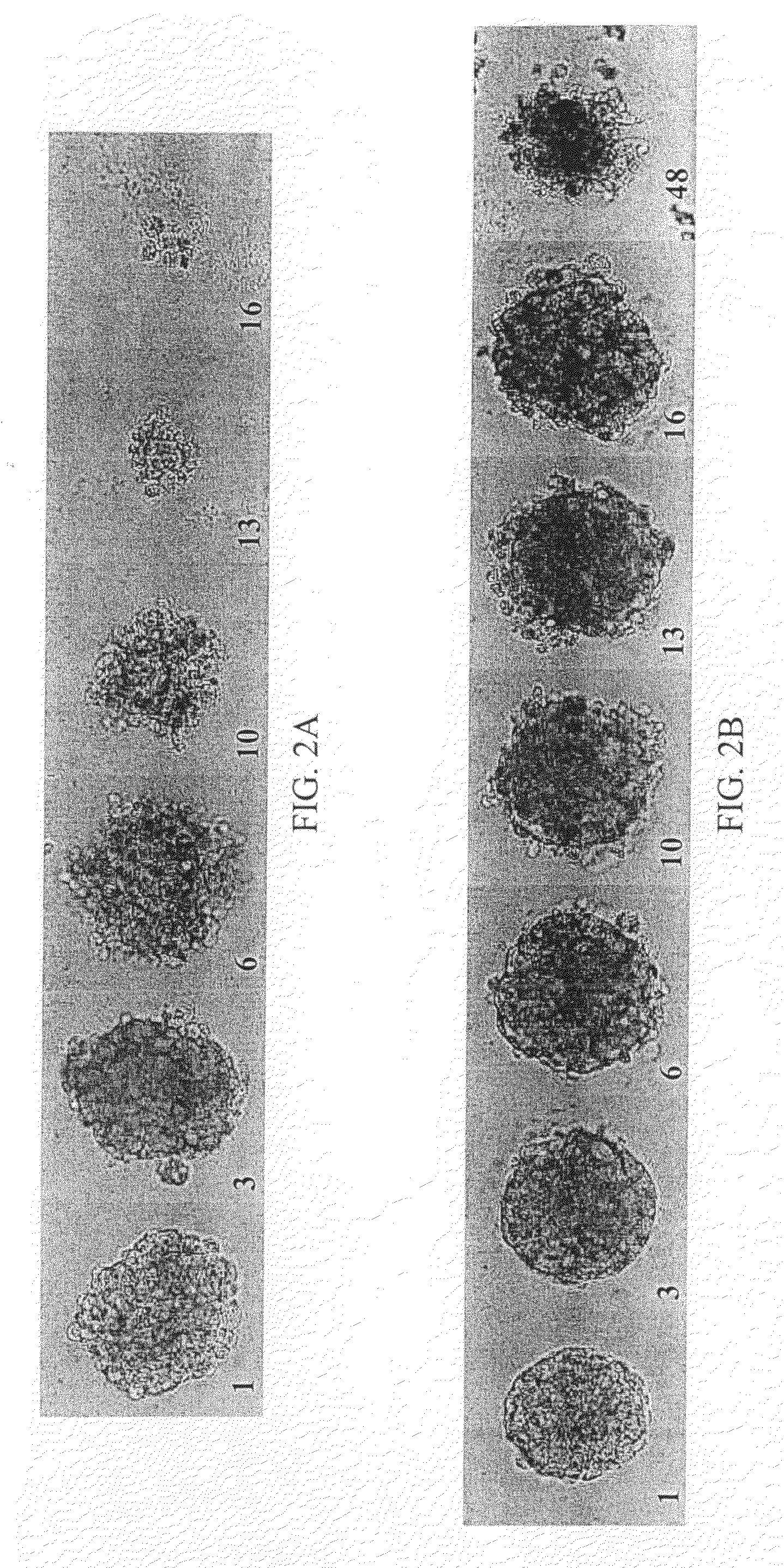Use of histone deacetylase inhibitors in combination with radiation for the treatment of cancer
a technology of histone deacetylase and radiation therapy, which is applied in the direction of drug composition, peptide/protein ingredients, therapy, etc., can solve the problems of lack of specificity, excessive toxicity to normal tissues, and inability to always be viable alternatives to surgery, etc., to achieve enhanced or synergistic therapeutic effect and therapeutically effective anticancer
- Summary
- Abstract
- Description
- Claims
- Application Information
AI Technical Summary
Benefits of technology
Problems solved by technology
Method used
Image
Examples
example 1
Effect of SAHA on Spheroid Growth
[0199]Studies were carried out in spheroids whose response to chemotherapeutics and radiation has been shown to better approximate the response seen in tumors, in vivo (Stuschke, M. et al. Int J Radiat Oncol Biol Phys. 24: 119-26, 1992; Santini, M. T. et al. Int J Radiat Biol. 75: 787-99, 1999; Dertinger, H. et al. Radiat Environ Biophys. 19: 101-7, 1981).
[0200]The effect of SAHA on spheroid growth was examined by incubating spheroids with 0, 1.25, 2.5 and 5 μM SAHA either for 120 h or continuously (FIGS. 1A-D). Spheroid growth was monitored for at least 40 days following incubation with SAHA for 120 h or for the 40-day continuous treatment. At a concentration of 1.25 μM SAHA, spheroid growth was delayed but not arrested for both the 120-hour and continuous exposure conditions. At 2.5 μM, complete growth arrest was observed over the 120 h incubation period. Growth inhibition persisted for another 4 to 5 days after the end of drug exposure. This delay...
example 2
Effect of SAHA and External Beam Radiation on Spheroid Growth
[0204]The dose-response of LNCaP spheroids to external beam, low LET, high dose-rate irradiation has been reported previously (Ballangrud, A. M. et al. Cancer Res. 61: 2008-14., 2001; Enmon, R. M., et al. Cancer Res, submitted). Based on these data, absorbed doses of 3 and 6 Gy were selected in the combination studies since these doses of radiation alone, yielded growth curves that matched the untreated curve in shape but with delays of 4 to 10 days to reach 1000-fold the original spheroid volume. Based on the SAHA dose-response data (FIGS. 1A-D), a 96 h incubation with 5 μM SAHA was selected for the combination studies. Combination treatment was carried out by exposing spheroids to SAHA for 48 h, irradiating and then incubating for another 48 or 72 h prior to washing and monitoring for growth.
[0205]LNCaP cells grown as spheroids were used in this study. The following treatment regimen was used:[0206]A: No treatment[0207]B...
example 3
Effect of SAHA and External Beam Radiation on Apoptosis
[0212]To examine whether SAHA increases radiation-induced apoptosis, TUNEL staining of spheroid sections at various times after the end of single or combination therapy was carried out. Immediately after the end of a 96 h SAHA incubation the majority of cells on the spheroid surface have undergone apoptosis and there is little evidence of apoptosis in the spheroid interior (FIG. 5A). This finding is also consistent with the morphological appearance of SAHA-treated spheroids at days 3 and 6 (FIG. 2A). By 48 h after the end of SAHA incubation, the apoptotic cells on the spheroid surface are not detected, presumably due to shedding, and apoptotic cells are found throughout the spheroid. Pockets of cellular debris are also evident within the interior. These are evident immediately after the end of SAHA incubation but become more prominent 6 and 24 hours later. TUNEL staining of spheroids treated with SAHA and radiation yielded an al...
PUM
| Property | Measurement | Unit |
|---|---|---|
| Mass | aaaaa | aaaaa |
| Mass flow rate | aaaaa | aaaaa |
| Solar gamma radiation | aaaaa | aaaaa |
Abstract
Description
Claims
Application Information
 Login to View More
Login to View More - R&D
- Intellectual Property
- Life Sciences
- Materials
- Tech Scout
- Unparalleled Data Quality
- Higher Quality Content
- 60% Fewer Hallucinations
Browse by: Latest US Patents, China's latest patents, Technical Efficacy Thesaurus, Application Domain, Technology Topic, Popular Technical Reports.
© 2025 PatSnap. All rights reserved.Legal|Privacy policy|Modern Slavery Act Transparency Statement|Sitemap|About US| Contact US: help@patsnap.com



